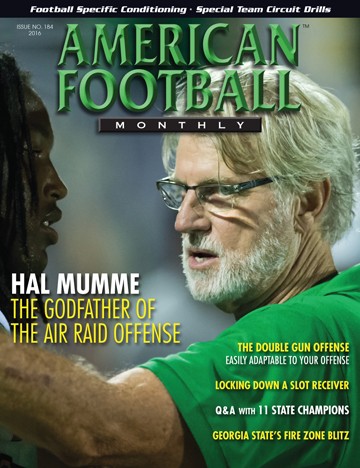Article CategoriesAFM Magazine
|
Drills Report: Special Teams Organization for Competition Drills and Circuitsby: Kerry Webb, Special Teams Coordinatorand Running Backs Coach Jacksonville University © More from this issue One of the greatest challenges for coaching special teams at all levels is how to get maximum quality reps in the most efficient manner possible during practice. Teaching multiple skills and techniques to 60+ players takes the combined effort of the entire coaching staff. I rely on all our coaches to help teach our players different aspects of the kicking game. It also takes a great deal of planning and organization so that your time on the field is efficient. One organizational concept that we used last year was splitting our roster into four teams for the purpose of special teams. We used these teams for competition drills and for circuit work. It was an easy, very effective way to organize our team for on field instruction and get some great practice in while competing.
|
|
|||||||
| HOME |
MAGAZINE |
SUBSCRIBE | ONLINE COLUMNISTS | COACHING VIDEOS |
Copyright 2025, AmericanFootballMonthly.com
All Rights Reserved





